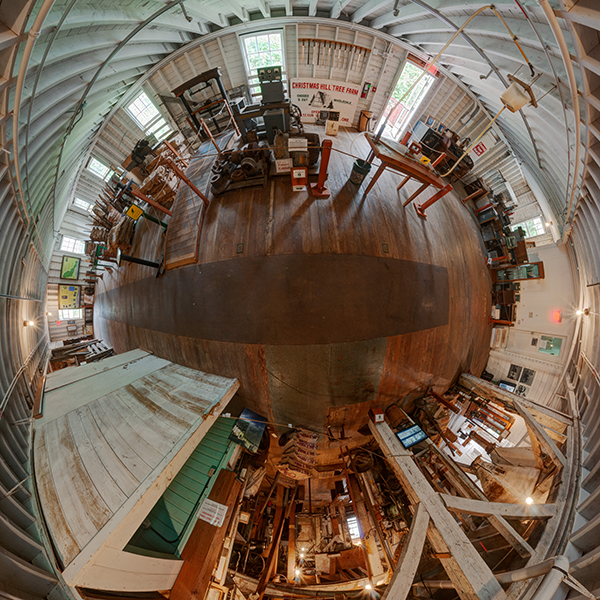Previously, I described an alternative way to represent pointers to spherical photos. Usually they are static online pictures, which works since a hyperlink can then send the viewer to the full, interactive picture. However, another possibility is to make the pointer a physical picture, printed out and maybe even hung on the wall.
The same thing can be done with the spherical picture itself. Ideally, the pictures represent the inside of a sphere, the view one gets when looking around. However, it can be printed on the outside of a sphere, and the experience of viewing it still more or less works.
Such spheres have been made, and it’s possible to order something very near from companies who will print them on pieces that snap together. Also, some people have experimented with mapping the picture to the outside of a cube, which gives six fixed views. That’s obviously less interactive, but still gives some idea.
In many spherical pictures, though, the top and bottom are not interesting. These represent looking up and down. A spherical picture taken outside while standing on cement, for example, would just have sky above and gray below – not very interesting.
This leads to another possibility: removing the top and bottom, straightening the sides, and making a cylinder by printing it on the outside.
Viewing a cylinder just means rotating it so that the area of interest is seen. Seems like this should work naturally.
A small cylinder could be the size of a Christmas ornament, while a larger one could sit on some sort of stand. On a stand, the viewer could easily turn it, approximating the experience of panning left or right in a regular online spherical photo. In addition, the stand could be motorized so that the cylinder moves on its own, just like online versions sometimes automatically pan around.
Going even further, the user could interact with the motorized system to be gently directed to certain views. There are more options for placing lighting inside the cylinder, coupling cylinders, generating the view dynamically from a projector instead of printed, and so on.
It seems like this approach has a lot of interesting possibilities, and I may end up building some to check them out.





